Sheng: Ancestor of Free-Reed Instruments
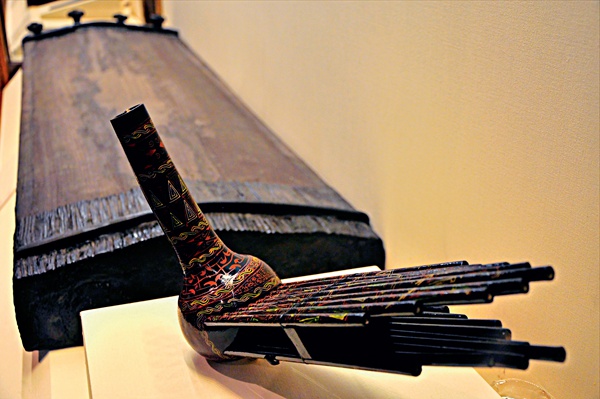
Perhaps you may have been impressed by the grand tunes played on a pipe organ, enjoyed joyful music produced by an accordion, or tried to play some tune on a harmonica. Did you know that all of these instruments would not be what they are without the genius invention of the reed used on the sheng, a traditional Chinese free-reed instrument, which inspired most of the other free-reed instruments around the world?
The sheng is deemed to be the inspiration for freereed instruments outside China. It spread to West Asia during the Northern Dynasty (386-581) and the Tang Dynasty (618-907), and then appeared in Europe around the 17th century. The organ, accordion and harmonica are all descendants of the sheng.
Unique Instrument
The sound of the sheng is made by the vibration of reeds and chambers produced by exhaling or inhaling into the mouthpiece and pressing specific holes on the pipes. It is the only Chinese traditional instrument, whose sound can be made while the player is both breathing in and breathing out. Even more amazing, it is a polyphonic instrument, which means it can produce several notes at the same time.
Primarily made from bamboo sticks, the sheng is composed of five main parts. The tobacco-pipe-shaped chamber at the bottom is called the sheng chest; the component at the front is the mouthpiece; sets of bamboo sticks called sheng pipes are placed in the chest; each pipe has one round opening, which is called a finger-hole. In addition, one reed is placed on each piece of bamboo pipe, enabling each reed to produce one note.
The techniques used to make the sheng are very complicated. In addition to the exceptional techniques required to make those small reeds out of bamboo, it takes skilled hands to trim them into the exact right pitch.
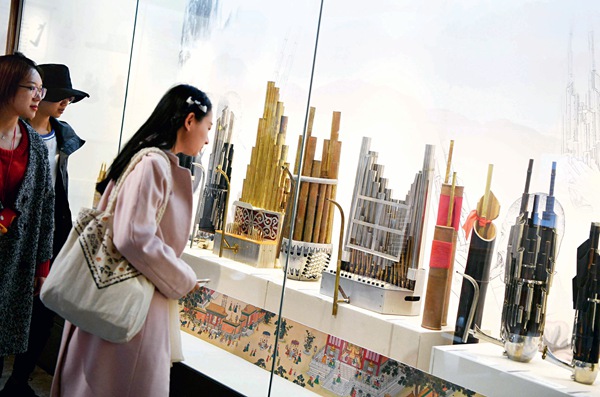
In the beginning, a sheng had 13 or 14 reeds, later some had 17, 21, 24, 26 or even 27 reeds, but each was considered a traditional sheng. After undergoing continuous reforms and attempted changes by generations of musicians, a number of alterations were made to the sheng, ranging from its tone, volume and note arrangements, as well as its appearance and weight.
The sheng is a polyphonic instrument, whose multiple notes can be played simultaneously. Therefore, the sheng is an ideal accompaniment instrument. As the Chinese saying goes, "Sheng and wind instruments never leave each other alone."

Ups and Downs
According to Chinese legend, the goddess Nü Wa, who created humans out of mud, invented the sheng. The Book of Documents and The Classic of Poetry contain the earliest written records of the sheng. During the Pre-Qin Period (pre-221 BC), sheng was the major wind instrument played in China. However, after the rise in popularity of plucked stringed instruments, the popularity of the sheng declined and it became an accompaniment instrument in Chinese orchestras.
After the founding of the People's Republic of China in 1949, the development of the sheng began to take an upward turn. A number of music schools included sheng playing as part of their curriculums and generations of exceptional sheng players emerged to meet the demands of the new era.
The traditional sheng cannot meet the demands of orchestras in such aspects as chords and choruses, but the contemporary sheng can — and does — it. In the 20th century, a group of sheng covering high-, mid- and low-keys were made to better serve the needs of orchestras. Apart from being an accompaniment instrument, sheng has gained popularity in recent years as a solo instrument. The sheng used in playing solos is usually a hand held traditional model or high-noted sheng with extra keys.
During the late Qing Dynasty (1616-1911), Wu Qirui (1882-1932) established Hongyin Studio in Beijing. During the past several decades, Wu's descendants have devoted their lives to studying and saving the craft of making the sheng. In 2011, China added Hongyin Studio's sheng-making craft to the list of the country's items of intangible cultural heritage.

Popular with Young Generation
Sheng is not only admired in Chinese culture, but is also enjoyed by many foreigners.
Ling Bo is a young sheng teacher at the College of Arts, under Beijing Language and Culture University (BLCU). Ling has been working there since 2016, two years after the college was established. Originally art class was a minor course provided for international students who made up half of BLCU's student body.
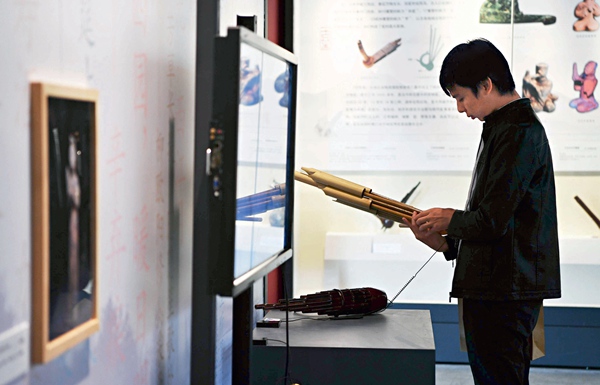
Ling notes most of his international students had never seen a sheng until they took their first sheng class. "They are sincerely interested in the traditional Chinese instrument. They think that even though sheng has a complex design, learning how to play the instrument is not that hard," Ling said. Each international student, whether taking sheng as a major course or a minor, is required to learn at least one short song during the course and he/she must perform it at the end of the semester.
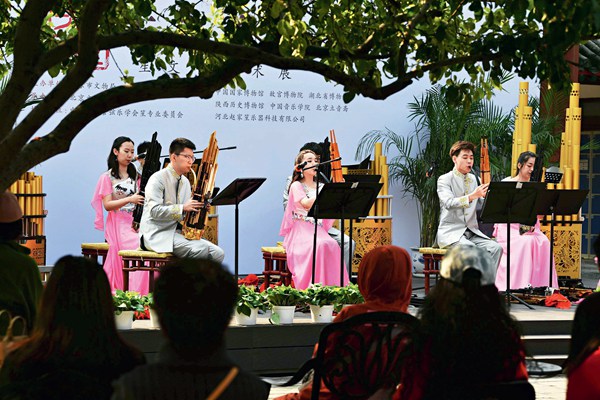
One of the college's traditions is to hold a music saloon at the end of each semester, during which Chinese and foreign students perform Chinese instruments either together or by themselves in small groups. During the concert, the students usually dress up in traditional costumes of their own cultures, while they play Chinese instruments. "This is an extraordinary exchange of cultures," said Ling.
According to Ling, rich cultural connotations can be found in the sheng. "When performers play the sheng, one breath in and one breath out are like the yin and yang, a traditional Chinese philosophical concept that describes the inseparable and complementary elements in the universe." For Ling, who has played the sheng for more than 20 years, the instrument is a bridge that connects him with nature. "The chest represents the earth, reeds are seeds, and those bamboo pipes are the crops that grow on the earth. A harmonious bond between the earth and humanity is embodied in the sheng," Ling observed. Every time he plays the sheng, the rendered music becomes a sincere and humble prayer to the earth and humanity.

"I hope audiences will perceive the harmonious relationship between nature and humanity through the sound of sheng," Ling said. There are now hundreds of young professional sheng players in China and more young amateur players who enjoy playing the instrument in their leisure time. This ancient instrument with long history will never be forgotten, and it will be continued to be passed on and played by future generations.
Photos Supplied by VCG
(Source: China Today/Women of China English Monthly June 2022 issue)
Please understand that womenofchina.cn,a non-profit, information-communication website, cannot reach every writer before using articles and images. For copyright issues, please contact us by emailing: website@womenofchina.cn. The articles published and opinions expressed on this website represent the opinions of writers and are not necessarily shared by womenofchina.cn.


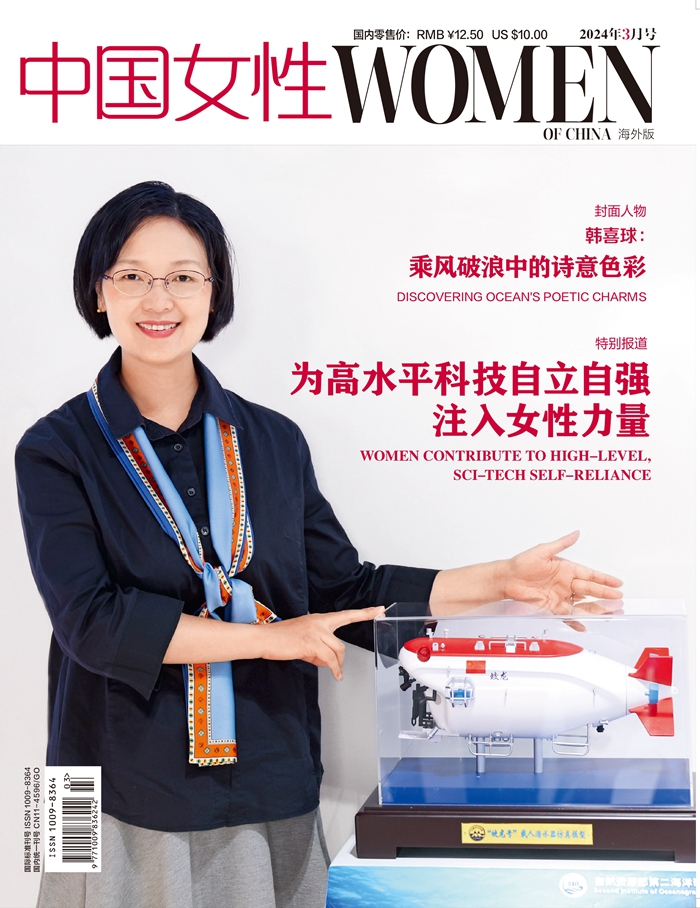

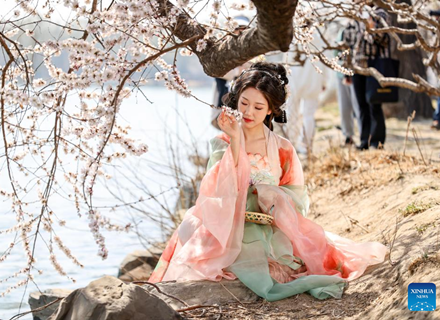



 WeChat
WeChat Weibo
Weibo 京公网安备 11010102004314号
京公网安备 11010102004314号